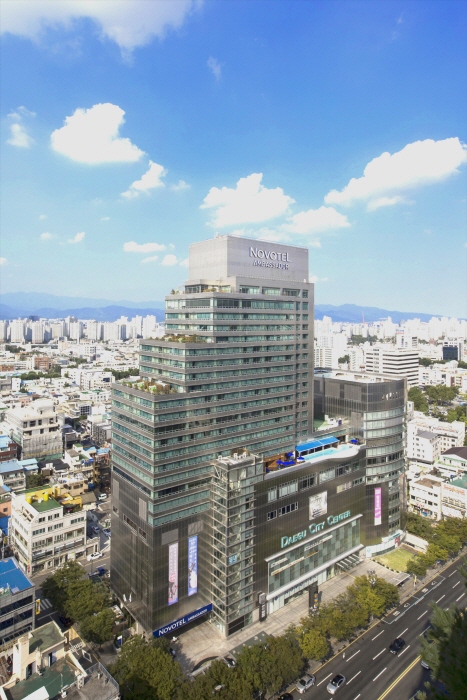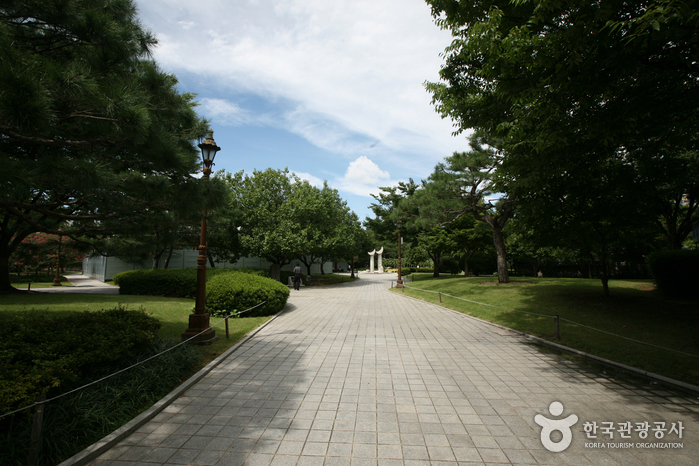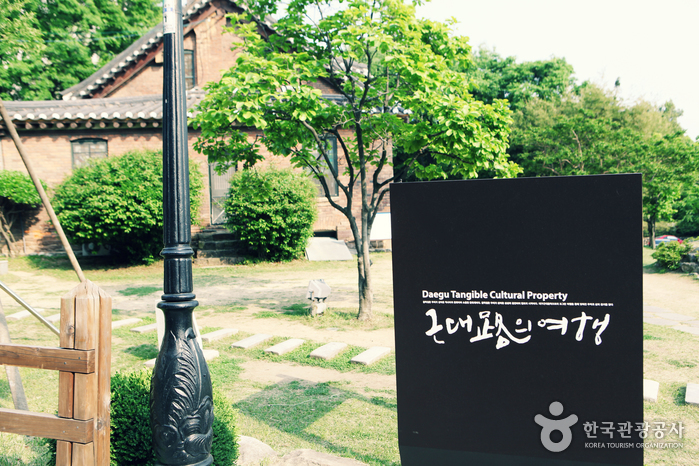Gugil Ttarogukbap (국일따로국밥)
426.3M 2020-05-04
571, Gukchaebosang-ro, Jung-gu, Daegu
+82-53-253-7623
Unlike traditional gukbap (rice soup), the rice and the soup in Ttarogukbap are served separately. It is a speciality in Daegu, and the main dish served at Gugil Ttarogukbap. The restaurant makes the broth with beef bones, and adds spices, meat and coagulated ox blood to complete the rich and flavorful soup. Meanwhile, the restaurant was designated as a site of master craftsmanship by the Korean Traditional Culture Preservation Committee, as well as an authentic local speciality restaurant in Daegu.
Novotel Ambassador Daegu (노보텔 앰배서더 대구)
445.8M 2021-02-10
611, Gukchaebosang-ro, Jung-gu, Daegu
+82-53-664-1101
Novotel Ambassador Daegu opened in July 2008, offering top-quality service. The hotel is located in the center of Daegu’s finance, shopping, and culture district, and is connected to the subway station. Transportation from and to the train station and airport is extremely convenient, making it the perfect place for travelers to enjoy their leisure time. The hotel boasts luxurious guestrooms, a business center, upscale restaurants and bars, meeting rooms, and a fitness center and sauna, as well as an outdoor swimming pool.
Daegu Yangnyeongsi Museum of Oriental Medicine (대구약령시 한의약박물관)
482.7M 2023-01-06
49, Dalgubeol-daero 415-gil, Jung-gu, Daegu
+82-53-253-3359
Yangnyeongsi Museum of Oriental Medicine continues to provide an opportunity to experience the 350-year-old traditions of Oriental medicine and medicine markets through multiple exhibitions and various hands-on experience programs. The museum provides graphics and animation shows in four languages as well as approximately 300 items on display. The first floor also houses the nation’s only wholesale market of traditional medicinal herbs.
Arc'teryx [Tax Refund Shop] (ARCTERYX)
497.0M 2024-06-26
132, Gyeongsanggamyeong-gil, Jung-gu, Daegu
-
Daegu Jeil Church (대구제일교회)
510.6M 2024-10-11
50, Gukchaebosang-ro 102-gil, Jung-gu, Daegu
+82-53-253-2615
Daegu Jeil Church is the oldest Protestant Church in Gyeongsangbuk-do Province. Initially established in 1898 over four tile-roofed houses, Daegu Jeil Church was rebuilt in 1933 with traditional and Western architectural designs. Subsequently, Deacon Lee Ju-Yeol dedicated a 33m bell tower in 1937, whlie the church underwent an interior renovation in 1969, and an expansion in 1981.
In conjuction with its physical development, which was at the forefront of the nation's architectural modernization, the church contributed largely to modernization and expansion of Christianity in the region as well as in Korea. In addition, by introducing modern medicine and education to the citizens of Daegu, the founders of Daegu Jeil Church stimulated social development in the region.
Bongsan Cultural Center (봉산문화회관)
514.5M 2022-12-26
77, Bongsanmunhwa-gil, Jung-gu, Daegu
+82-53-661-3500
Bongsan Cultural Center is a comprehensive culture and arts complex located on Bongsan Culture Street in downtown Daegu. The center serves to provide cultural entertainment to the community as well as contribute to the development of traditional culture and local art. The center also provides opportunities for the public to participate in well-being recreational activities and acquire life-long education related to culture and arts.
The center has five modern exhibition halls (Exhibition Hall
No. 1-4 and Art Space) and two performance halls (Gaon Hall with 442 seats and Space Raon with 90 seats). As the center is located near Banwoldang Station (Daegu Subway Line 1), it is easily accessible by public transportation.
Gyonam YMCA (교남YMCA)
527.5M 2023-01-20
22, Namseong-ro, Jung-gu, Daegu
Established in December 1921, the Gyonam YMCA Hall served as a gateway to the modern movement in Daegu. During the Japanese colonial period, it was a meeting place and a base for Christian national movements such as the Product Promotion Movement, the Christian Rural Movement, and the Singanhoe Movement. This hall is a two-story red brick building built by the American missionary Blair in 1914. It retains the characteristics of the 1910s and '20s masonry construction, such as decorating the first and second floors with cornices and securing a square window with arches. In the early days, it was used as a place for students' education, evening classes, and lectures.
Gyeongsanggamnyeong Park (경상감영공원)
554.4M 2018-08-07
99, Gyeongsanggamyeong-gil, Jung-gu, Daegu
+82-53-254-9404
Located in central Daegu, Gyeongsanggamyeong Park was built during the 34th year of King Seonjo of the Joseon Dynasty (1601) and was the original location of Gyeongsanggamyeong (1910), the office of the Gyeongsangbuk-do governor. In 1965 the provincial office was moved to another location and the park opened its doors to the public under the name of Central Park. The park was renamed again in 1997 and has been known as Gyeongsanggamyeong Park ever since.
Many cultural and historical heritages are located in the park including the Seonhwa-dang building where the governor worked (Daegu Tangible Cultural Property No.1); the Jungcheong-gak building that was one of the governor’s residences (Daegu Tangible Cultural Property No.2); and Seonjeong-bi gravestone where governor’s achievements are engraved. Seonhwa-dang building in particular has historical significance since it is one of the few remaining government buildings.
The park is well loved by citizens for its green forest, beautiful flowers, well-developed grass plaza, scenic fountain area, and its comfortable walking paths.
Daegu Modern History Streets (Tour of Modern Streets) (대구 근대골목(근대로의 여행))
557.4M 2023-10-27
66, Gukchaebosang-ro 102-gil, Jung-gu, Daegu
+82-53-661-3327
Daegu Modern History Streets is an experiential tour that brings the participants across Daegu’s alleyways and living history. During the Korean War, Daegu was much less damaged than other regions. Because of that, the city retains the changes in lifestyles before and after the war relatively well.
There are 13 courses in total, run by regional self-governance groups in Daegu, defined according to different themes and areas. The most popular among them is Course 2, the Modern Cultural Street, which takes visitors on a tour of major sites associated with Daegu’s modernity. Follow the retro aesthetics and the history of Daegu and Korea along places like Kyesan Catholic Church, Jeil Church, old houses, and the former Chinese Elementary School.
Note that multilingual tours are offered to international visitors in English, Japanese, and Chinese, in regular tours (14:00 every Saturday) and on-demand tours (available for groups of more than 5). Reservations are offered on the official website.




 English
English
 한국어
한국어 日本語
日本語 中文(简体)
中文(简体) Deutsch
Deutsch Français
Français Español
Español Русский
Русский